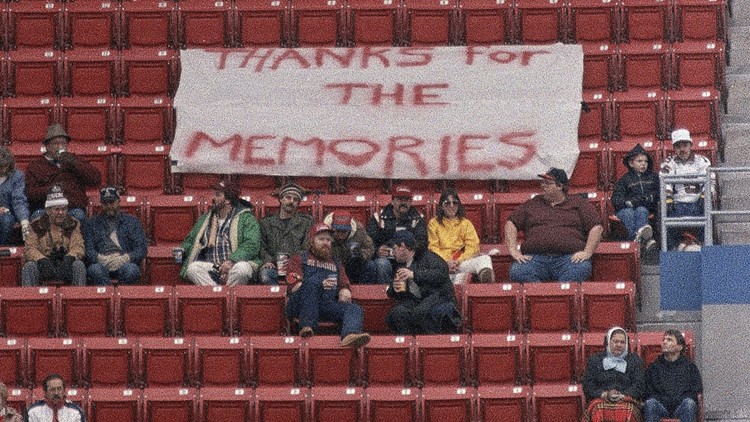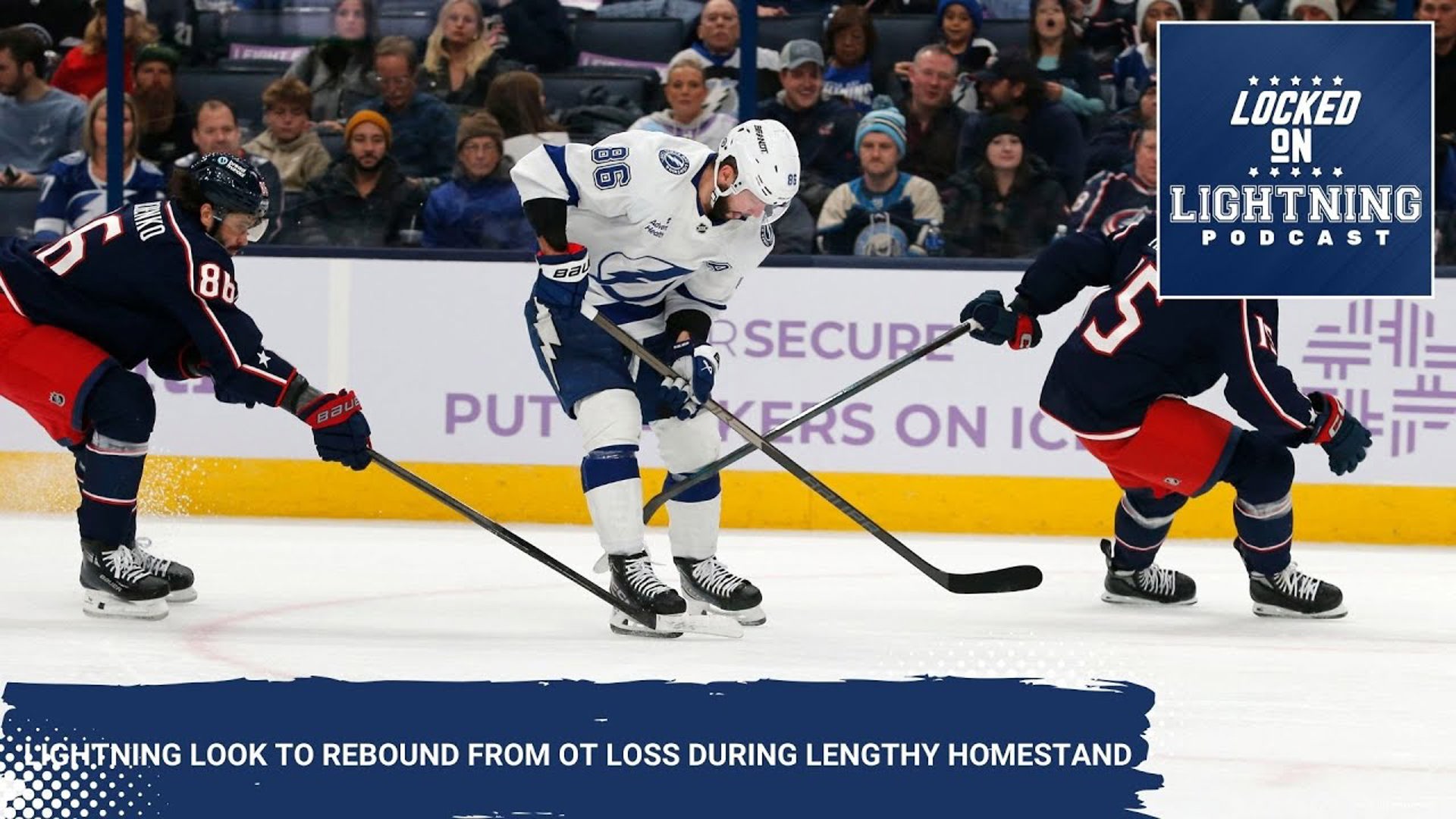ST. LOUIS — We’ve all had breakups before, right? It’s a sick feeling in the pit of your stomach when you’re the breakup-ee and not the breakup-er.
I’ve experienced that feeling in my football relationships as well as the more personal kind. And the feeling is not all that much different. It’s happened twice, and as they say, the first time is always the hardest.
I can remember the inevitability of the Football Cardinals leaving back in 1988.
Thursday was the “day after”, and 32 years later it’s still a bitter memory. The Rams relocating here in 1995 salved the wound for a long time until we got hit again. As 5 On Your Side Sports Director Frank Cusumano has suggested more than once, we St. Louis football fans would have better odds hitting a Mega Millions jackpot than to be graced with the back-to-back football team owners we wound up with.
The end of the Big Red era was one of those breakups you could see coming from a mile away for a few years, but you were helpless to do anything about it.
The first signs of discontent actually came back in the mid-1960’s when Bill Bidwill and his brother, Stormy, looked into the possibility of moving to Atlanta. The issue: a new stadium.
Sound familiar? Stadium issues sent the Big Red to Arizona, and it was the central theme of the Rams packing up and moving west in 2016.
Stormy had bought himself out of the football business by 1985, but Bill again saw greener pastures. He was lampooned in cartoons and ridiculed for his lack of personal and p.r. skills and ultimately left cast as the villain, but in hindsight he didn’t really have a choice.
Fast forward about thirty years and Bidwill comes out looking like the guy in the white hat, compared to Stan Kroenke.
Let’s unpack, shall we?
The Atlanta saga played out only a handful of years after the team moved to St. Louis from Chicago. The brothers Bidwill had grown dissatisfied with old Sportman’s Park and its lack of seating and amenities that other teams in the NFL were getting. They also weren’t happy about being the second tenants; the baseball Cardinals were the landlords and everything had to be coordinated around their schedule.
In 1964, for example, the Big Red had to play the first six weeks of the season on the road. They actually played eight road games that season, giving one away because the baseball Cardinals were hosting a Sunday World Series game - hence the Big Red went to Baltimore and lost to the Colts by twenty.
Did you know that the Big Red lost the division title to Cleveland by a half-game that season? It’s anybody’s guess, but maybe – just maybe – playing the Colts at home would have made a difference. Had they beaten Baltimore in October, they would have played for the league championship – in Baltimore in a rematch against the Colts.
Then there was the lack of a suitable practice facility. The Big Red had to work around baseball home games and often practiced in Forest Park. You read that right, an NFL team working out in a public park. Given how secretive pro football teams are about keeping their game plans and plays under wraps, getting ready for that week’s game out in the open couldn’t have been ideal.
Ultimately, along came Gussie Busch and his plan to build a new stadium downtown, with fifty thousand seats and private boxes for game viewing. That was enough to appeal to the Bidwills, and so they stayed in St. Louis for another couple of decades.
Still, it wasn’t an ideal situation. The football team worked out at Busch Memorial Stadium for the first two months of the season knowing their schedule revolved around baseball home games. Meanwhile, domed stadiums were becoming the rage of the NFL, where football games could be played indoors in perfect conditions and luxury boxes could be filled by corporate patrons for lots of additional money; money a family-owned team like the Big Red could have used to compete in the league, or so Bidwill lamented. Meanwhile the team, aside from the outlier Cardiac Cardinals era, were largely mediocre or forgettable. Was that proof of his point?
By 1984, Bidwill was growing restless.
His team was showing signs of promise, and a roster of young talent looked like they were on the cusp of greatness. Bidwill used this opportunity to express his point more loudly. He even began making visits to football-starved markets who would be open to giving him what he wanted. Civic leaders tried to play the heavy, suggesting that that if the owner wanted luxury boxes he could have them, if he paid to have them put in. Imagine how that went over.
Finally, our city took the hint and plans came for a domed stadium complete with luxury boxes. But then the dream of football fans in the area turned into a nightmare.
The team collapsed in 1985, and were in rebuild mode for the next two years after that. And more, the initial harmony of the city and county working together on the stadium project dissolved when the two sides couldn’t come to agreement where the stadium should be built.
St. Louis mayor Vince Schoemehl took out an option to buy the New England Patriots and then ultimately swap franchises with Bidwill to keep the Cardinals here; crazy, right? When Bidwill shot that idea down, Mayor Schoemehl turned on him and said the Big Red in St. Louis was a “bad marriage.” By 1987, Bidwill openly shopped his team around the country and sunny Arizona jumped into the forefront.
December 13, 1987 was the date of the last Big Red home game in St. Louis. By then hope of a reversal was gone and the team wouldn’t be far behind. The Christmas holidays were tempered by the thought Bidwill would pull the plug any day. We as a news station tried to keep up with the infamously private Bidwill’s agenda. Was he booked on a flight to New York to inform the league of his intentions? Would he be flying out to his new home first, and then to New York? Folks in our newsroom were wearing out the phones and annoying those supposedly in the know.
Finally on January 14, we got the tip. Bidwill was booked on a late day flight to New York. Reporter Mike Owens got booked on the same flight and the chase was on. Mike is one of the most connected and dogged reporters I ever worked with, but even he got stymied by the tight-lipped Bidwill. Not a word came from the owner’s mouth once they boarded the plane, despite Mike’s best efforts. Not a word from the time Bidwill walked from his hotel to the NFL offices the next morning. Finally, with the divorce decree in hand (disguised as the formal league relocation papers) did Bidwill finally talk. His hand was forced, he said. He had no choice, he responded. He had to do what was best for his team, he elaborated. All of it sounded hollow to this St. Louisan, and the other football fans in St. Louis at the time.
Thirty-two years later, the scar from that wound still flares up. But in hindsight, who could blame the guy?
He wanted to compete with the wealthier teams in the league; he just didn’t get the civic cooperation. It was a different climate than it became once the football itch hit again here, and later when the Rams became a possibility. If Bidwill had gotten the aid and teamwork from the area’s movers and shakers that occurred in luring Georgia Frontiere back home, we would never have experienced the Greatest Show On Turf.
Come to think of it, the best thing that happened for Bill Bidwill in St. Louis was Stan Kroenke.
Ouch! That guy. But that’s a whole ‘nother story.



